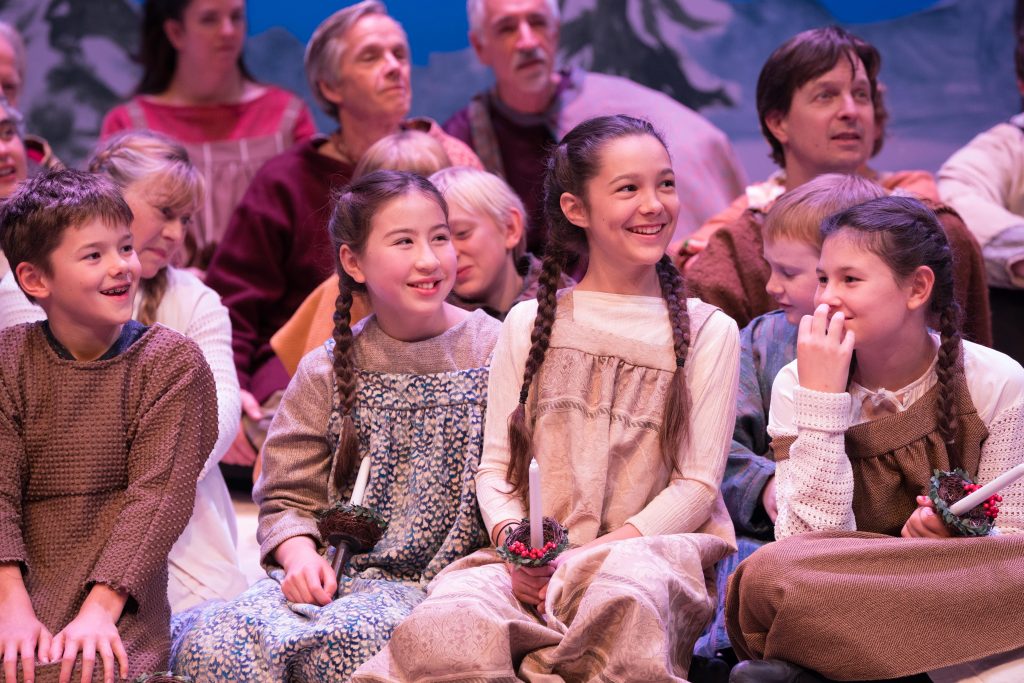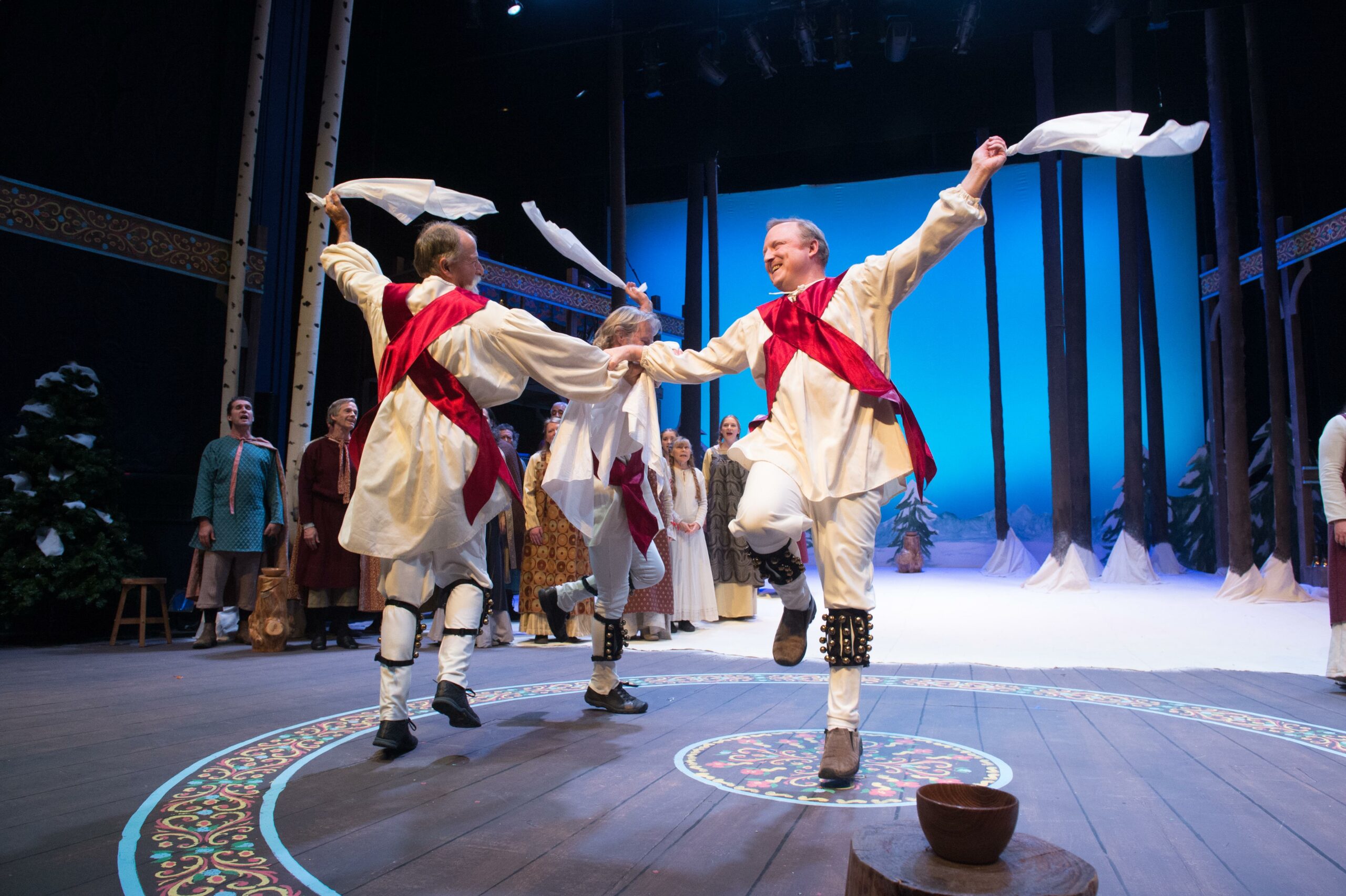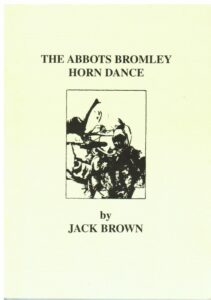Midwinter Revels
What is the Midwinter Revels?
The Midwinter Revels is steeped in traditions of song, dance, poetry and performance. Here are a few traditions you’ll see almost every year.
A Midwinter Revels performance usually includes a mummer’s play. This comic and usually anachronistic enactment of death and rebirth finds its roots in celebrations held throughout Europe to mark important stages in the agricultural year. In the Midwinter Revels, the mummer’s play is another demonstration of the Midwinter Revels central theme: the descent into darkness and the return of the light. In a mummer’s play a hero usually fights a villain (traditionally a dragon), is killed, and then resurrected by magic. A Revels mummers play will often include a sword dance.


Production History
Scroll through to find a production and click to learn more about the cast and creative team
Touchstones
Dona Nobis Pacem
At some point in a Midwinter Revels performance, it is very likely that the audience will be invited to join with the performers to sing Dona Nobis Pacem, a short prayer for peace originally from the Latin mass. Dona Nobis Pacem is a round for three parts, and the audience divides into three sections to sing along with those onstage. The melody is relatively simple and easy to learn, with the second and third line supplying harmony to the first. A Revels audience singing with the performers onstage in three part harmony creates an awe inspiring sound in the theatre.
The Shortest Day
At the close of every Midwinter Revels, just before the final audience song, someone from the cast will step out to recite The Shortest Day, a poem written specifically for the Revels in 1977 by Newbery Award winning author Susan Cooper. The Shortest Day is a moment when the cast of the Midwinter Revels reflects on the journey they and the audience have been on together, and remembers that people have been gathering to celebrate at the darkest time of the year for many, many centuries. The poem ends with the line “Welcome Yule”, to which the entire audience responds, “Welcome Yule!” In 2019 Cooper collaborated with illustrator Carson Ellis to release a beautifully illustrated version of the poem.

More Midwinter History
One part of many Midwinter Revels performances that captures the mystery of mid-winter celebration is the Abbots Bromley Horn Dance, an age-old procession of 10 to 12 figures. In the dance six people carry sets of caribou horns, followed by a hobby horse, Maid Marian (usually a man dressed as a woman), a child with a bow and arrow, and a fool who periodically dings a small triangle. The Revels dance choreography is inspired by an all-day procession still done each September in the tiny town of Abbots Bromley in Staffordshire, England. The dance is serpentine and includes a figure in which lines of five dancers each approach and retire and cross and repeat, with some clashing of the horns.

History of the horns: The horns in the town of Abbots Bromley have been carbon dated to 1065. At least one historian of the dance has identified them with an 11th century monk named Wulfric, counselor to King Ethelred and founder of a Benedictine Abbey on whose land the village was founded in 1004. He speculates that the horns were from caribou brought in by Vikings, possibly those against whom Wulfric defended Mercia in 1010.
The dance was adapted by John Langstaff and is done in Revels fashion to a haunting tune first notated in the 1850′s by an Abbots Bromley resident, William Robinson, who said it was old in his time. Its appeal is the appeal of most ritual: it cannot be explained, only experienced.
Lord of the Dance and Morris Dancing
At the conclusion of the first act of every Midwinter Revels, the chorus and audience join in a serpentine song and dance, based on Sidney Carter’s song, “Lord of the Dance,” an adaptation of the Shaker song, “‘Tis a Gift To Be Simple.”
The song and dance is a brief experience of shared celebration and is, for many, the community high point of the show. Since Morris dancing has long been centrally connected to celebrations of the return of spring, this joining of audience and chorus is introduced by a unique Morris dance choreographed by Carol Langstaff in Cambridge in 1971 for the very first Revels. The dance features steps taken from five village Morris traditions. They are danced by two dancers at stage center until the song ends and dancers and chorus members dance with the audience around the theater.
Morris dancing, which can be traced back to the mid-15th century, is a festive dance form, sporting bells and ribbons, long associated with towns and villages in the south Midlands of England. Its origins may lie on the European continent and until the mid-16th century, it seems to have been mostly an entertainment at court or among the gentry.
In towns and villages throughout the southwest region of England men formed teams of six dancers, plus a fool, hobby horse, and someone to collect the money, got a musician and during the spring and summer performed a set of dances unique to their village. It was a colorful, often rowdy kind of street theater, costumed and spirited, usually emphasizing fertility and the good luck of the Morris. Historically danced mostly by men, Morris has had a modern revival and is now danced by men’s teams, women’s teams, and mixed teams.
